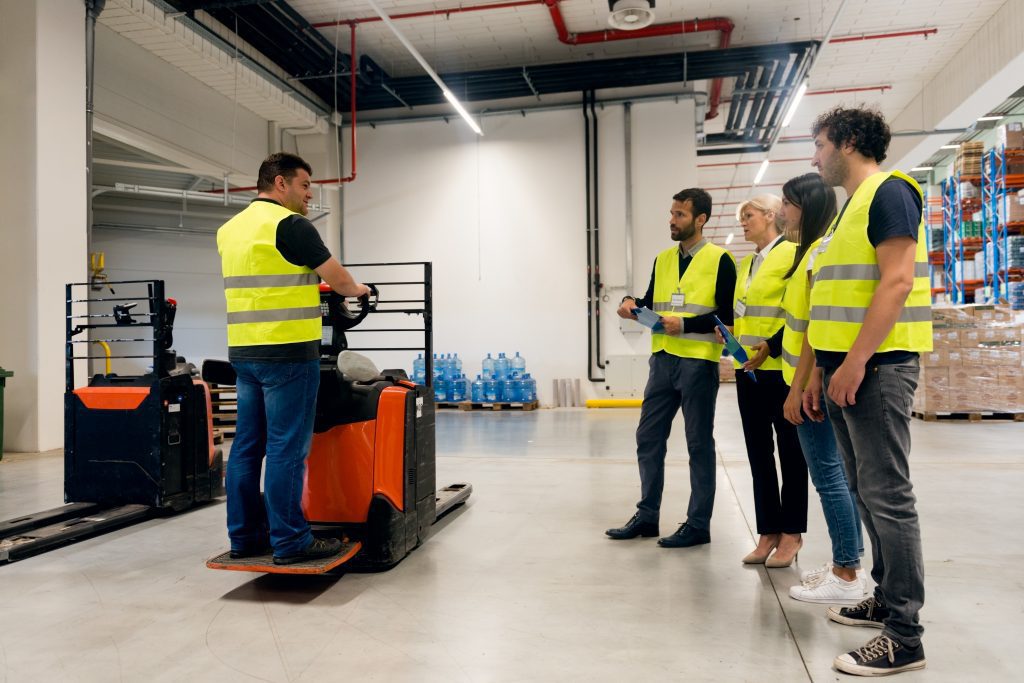
Preparing for Workplace Inspections

Written by: Virginia McCormick, NES, Inc.

Just as preparation is a key element in performing a job safely, it is also the key to performing well on workplace inspections.
Workplace Inspections: Ensuring Safety for All
Employers should always strive to provide a safe workplace for their employees. As the federal agency responsible for enforcing occupational safety and health regulations in the workplace, the Occupational Safety and Health Administration (OSHA) ensures that employers keep workplace safety in mind. It fulfills this responsibility by conducting workplace inspections and issuing citations for safety and health standard violations.
Both federal OSHA and California’s equivalent, Cal/OSHA, maintain the authority to conduct workplace inspections. Inspections are only conducted by verifiable compliance officers. In states that have developed their own plans, as California has, inspections are typically conducted by the state agency.
Federal and state workplace inspections follow the same basic protocol regardless of the conducting agency. However, federal OSHA can still conduct workplace inspections, regardless of the state plan, so it is important to be prepared for both agencies.
What are the differences between federal OSHA and Cal/OSHA? To find out, see the May 2019 NES article Cal/OSHA vs. Federal OSHA.

Both federal OSHA and Cal/OSHA maintain the authority to conduct workplace inspections.
What Prompts Workplace Inspections
There are a variety of reasons that may prompt a workplace inspection, from worker complaints to targeted inspections. For both federal OSHA and Cal/OSHA, there are two types of workplace inspections: programmed and unprogrammed.
A programmed inspection is an inspection of an employer randomly selected from a specific industry, or as part of a local or national workplace safety and health emphasis program. An unprogrammed inspection is, “scheduled in response to alleged hazardous working conditions identified at a specific worksite.”
As both federal OSHA and Cal/OSHA (within California) have jurisdiction over numerous U.S. worksites, the agencies will often focus their resources on the most hazardous workplaces in the following order of priority:
-
- Imminent danger situations, or hazards that could cause death or serious physical harm
- Severe injuries and illnesses, such as work-related fatalities, inpatient hospitalizations, amputations, or loss of an eye
- Worker complaints, like allegations of hazards or violations, also receive a high priority; employees may request anonymity when they file complaints
- Referrals of hazards from other agencies, individuals, organizations, or the media
- Targeted inspections, or inspections aimed at specific “high hazard” industries or workplaces that have experienced high rates of injuries and illnesses
- Follow-up inspections, which check for the adequate abatement of previously cited violations
Certain “high hazard” industries are of particular interest when it comes to workplace inspections. Cal/OSHA releases an annual list of high hazard industries, which often includes industries such as iron foundries, landscaping services, and cattle ranching. Due to these industries having higher incident rates of occupational injuries and workers’ compensation losses, they are subject to programmed workplace inspections more often than other industries.

In California, a serious injury will often prompt a workplace inspection from either federal OSHA or Cal/OSHA.
Tips & Tricks to Prepare for Workplace Inspections
The following is a collection of ways an employer may prepare for workplace inspections. As this is not an exhaustive list, employers are encouraged to continually seek out their own site-specific approaches to preparing for workplace inspections. Doing so will not only help to prevent hefty fees but will also increase the overall safety of the employees.
- Develop a company inspection procedure that covers what actions should be taken when an inspector arrives and identifies an inspection representative
- Identify and correct potential violations as soon as possible; referencing commonly cited violations can be a good way to identify potential issues
- If a potential violation cannot be addressed adequately, seek consulting services to assist in the correction
- Ensure employees receive proper training on their rights in the case of an OSHA interview
- Prepare workplace inspection kits, which may include useful inspection tools such as writing implements, tape measures, flashlights, monitoring equipment, and digital cameras
- Consolidate all relevant and required documentation and ensure it is available to all employees and inspectors upon request
- Understand the general industry safety orders that may apply to specific worksites and be prepared to address these industry-specific regulations

Employee training is essential in preparing for a workplace inspection.
Failure to Prepare Spells Disaster
Under the Occupational Safety and Health Act of 1970, employers are responsible for providing safe and healthful workplaces for their employees. Anyone living in one of the 22 states or territories with an OSHA-approved state plan must comply with state-level standards in addition to federal standards.
Just as preparation is a key element in performing a job safely, it is also the key to performing well on workplace inspections. Failure to sufficiently plan and prepare for workplace inspections can be disastrous for an employer. The maximum penalty for a serious federal OSHA violation was recently raised to $13,260, while the current Cal/OSHA maximum penalty for general or regulatory violations currently sits at $13,047.
Proper compliance with safety standards will always help reduce the risk of fatalities, injuries, and hazards at worksites, which will in turn reduce the risk to employers of incurring serious citations from either agency. By being serious and proactive about implementing safety management processes that engage employees, employers are making important efforts to keep their workers safe.
NES can help your business or agency stay compliant with both Cal/OSHA and federal OSHA regulations by providing top-quality training and consulting. For more information about our environmental health & safety training and consulting capabilities, please contact NES at 916-353-2360 / 1-800-NES-ADVISE (1-800-637-2384) or office@nesglobal.net.
References:
Cal/OSHA Inspection Procedures
FFY 2019–2020 High Hazard Industry List
